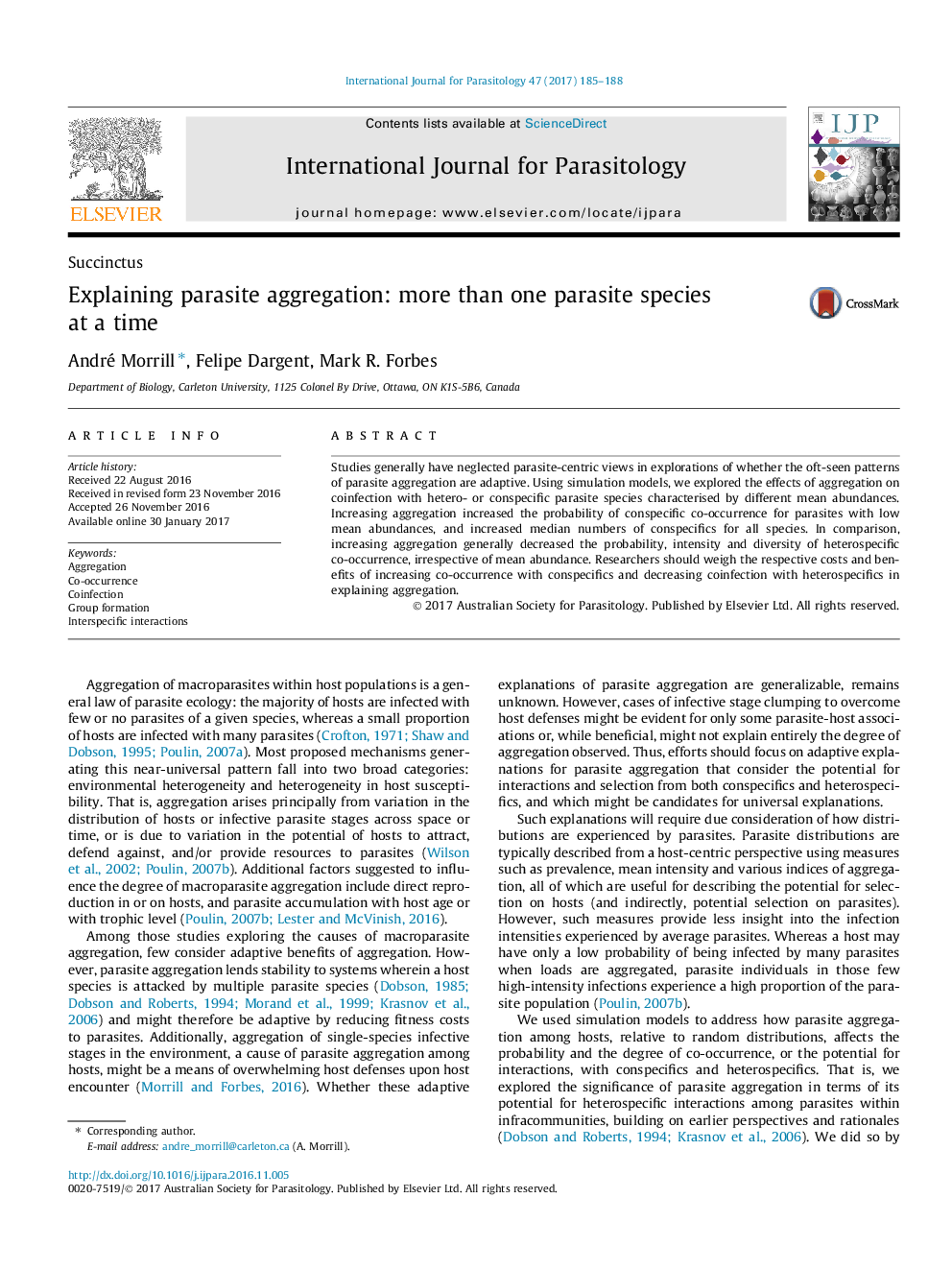| Article ID | Journal | Published Year | Pages | File Type |
|---|---|---|---|---|
| 5541237 | International Journal for Parasitology | 2017 | 4 Pages |
â¢Parasite-centric models are used to explore the effects of aggregation on coinfection.â¢Aggregation increases the probability and intensity of conspecific co-occurrence.â¢Aggregation lowers the probability, intensity and diversity of heterospecific infection.â¢In light of the results, generalizable adaptive benefits of aggregation are suggested.
Studies generally have neglected parasite-centric views in explorations of whether the oft-seen patterns of parasite aggregation are adaptive. Using simulation models, we explored the effects of aggregation on coinfection with hetero- or conspecific parasite species characterised by different mean abundances. Increasing aggregation increased the probability of conspecific co-occurrence for parasites with low mean abundances, and increased median numbers of conspecifics for all species. In comparison, increasing aggregation generally decreased the probability, intensity and diversity of heterospecific co-occurrence, irrespective of mean abundance. Researchers should weigh the respective costs and benefits of increasing co-occurrence with conspecifics and decreasing coinfection with heterospecifics in explaining aggregation.
Graphical abstractDownload high-res image (45KB)Download full-size image
